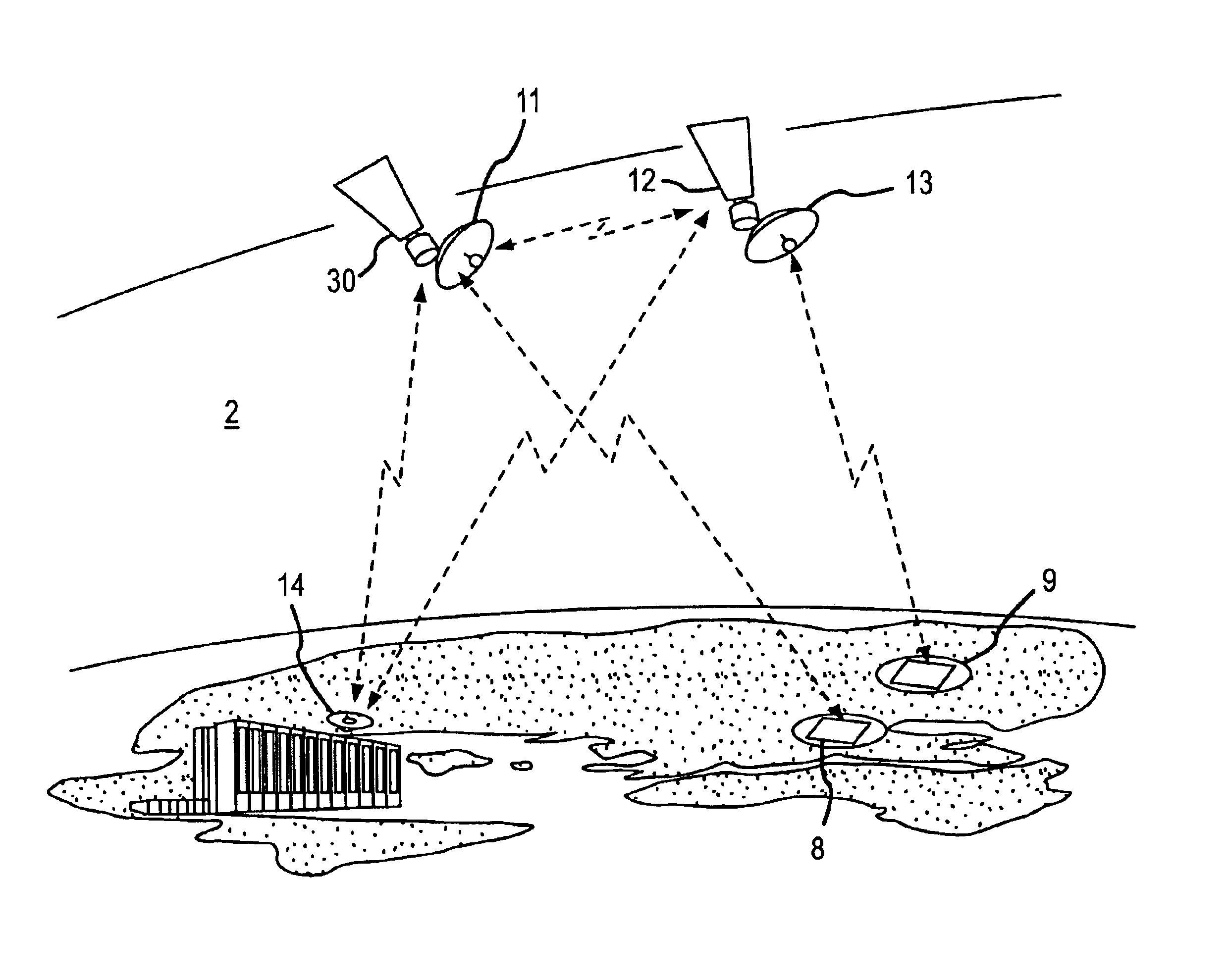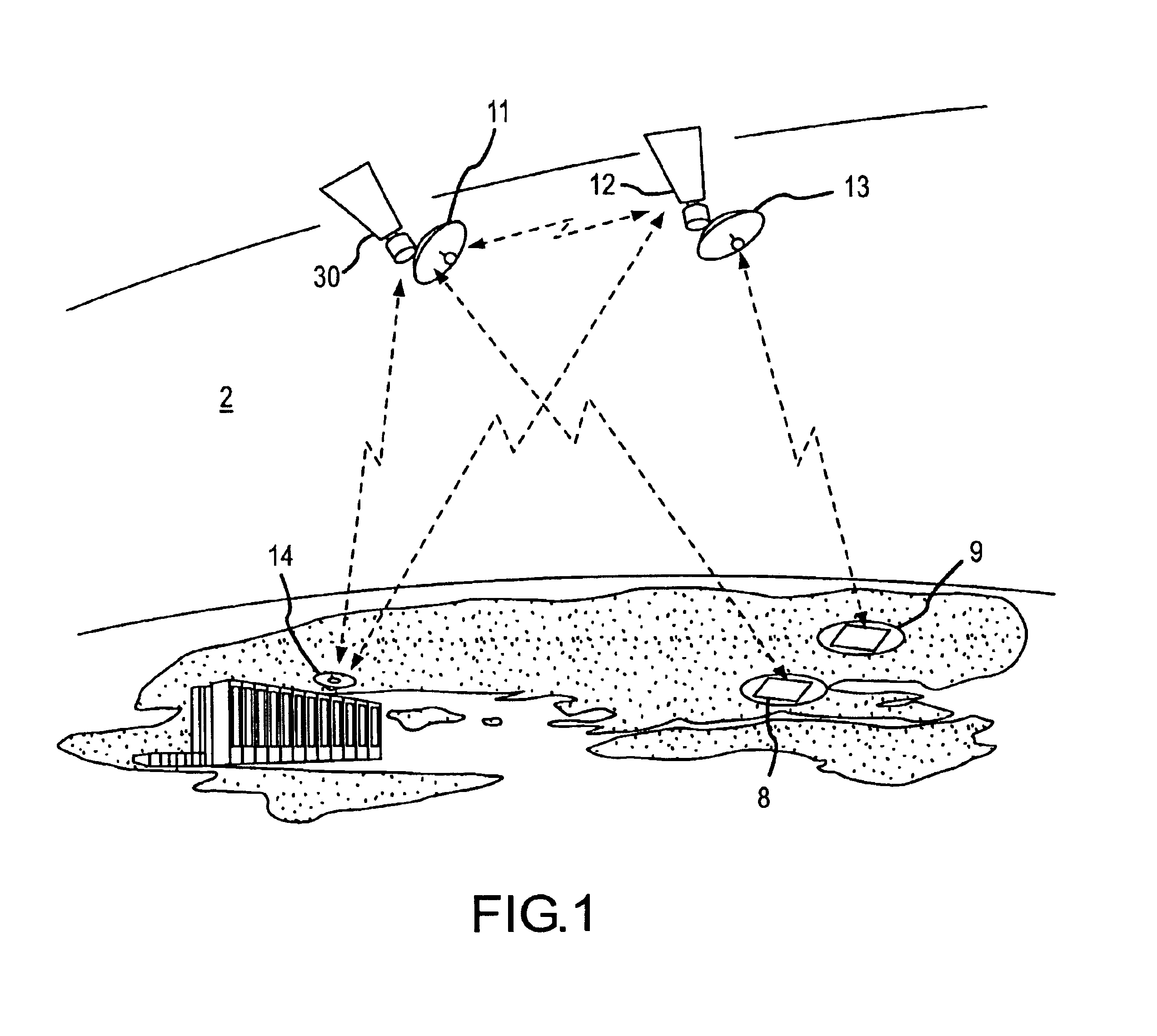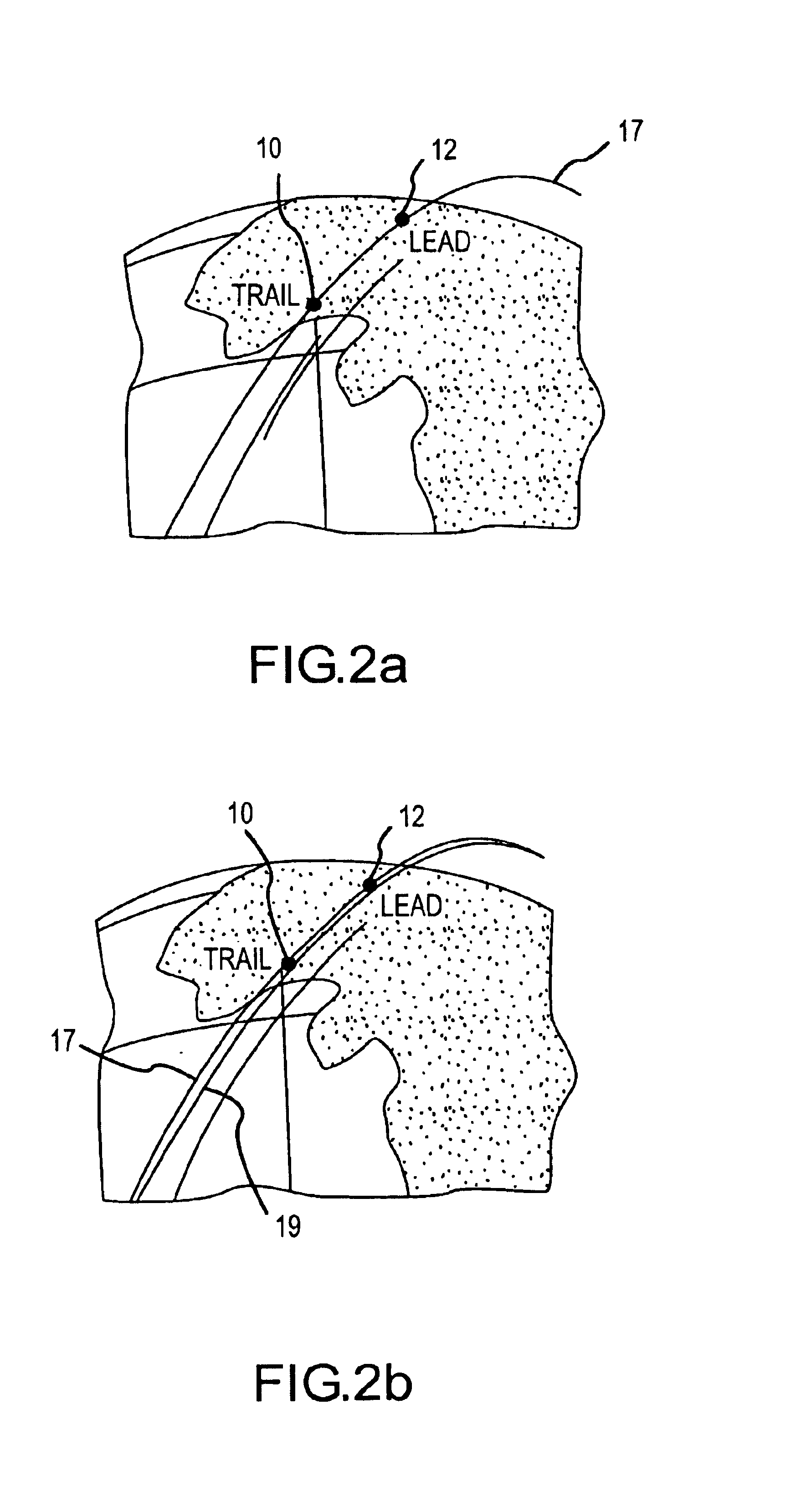Method and apparatus for collection and processing of interferometric synthetic aperture radar data
a synthetic aperture radar and image data technology, applied in the field of synthetic aperture radar image data collection system and method, can solve the problems of decorrelation of sar image data, difficult monitoring and control of relative movements of antennas, and difficulty in obtaining sufficient baselines, so as to avoid interference between space vehicles and minimize decorrelation effects
- Summary
- Abstract
- Description
- Claims
- Application Information
AI Technical Summary
Benefits of technology
Problems solved by technology
Method used
Image
Examples
Embodiment Construction
FIG. 1 illustrates an exemplary system embodiment for the present invention. The system includes at least two space vehicles 10 and 12, such as satellites, each having a combination collection and transmission antenna, 11 and 13 respectively, mounted thereon for periodic transmission of electromagnetic energy towards regions of interest (ROI) 8 and 9 on a planetary surface, such as Earth, and the collection of a portion of the reflected energy. Antennas 11 and 13 may be configured for operation in a strip map mode, e.g., where the antennas are positioned relative to the space vehicles to maintain a substantially common path over the ROI's during imaging operations. The strip map mode allows a low cost collection configuration which avoids the need to articulate the antennas as is needed for spotlight imaging. It also gives the large area rate needed for global mapping.
In an exemplary configuration for the nominal mapping mode, the system may produce a three 3-meter along / track (AZIM...
PUM
 Login to View More
Login to View More Abstract
Description
Claims
Application Information
 Login to View More
Login to View More - R&D
- Intellectual Property
- Life Sciences
- Materials
- Tech Scout
- Unparalleled Data Quality
- Higher Quality Content
- 60% Fewer Hallucinations
Browse by: Latest US Patents, China's latest patents, Technical Efficacy Thesaurus, Application Domain, Technology Topic, Popular Technical Reports.
© 2025 PatSnap. All rights reserved.Legal|Privacy policy|Modern Slavery Act Transparency Statement|Sitemap|About US| Contact US: help@patsnap.com



